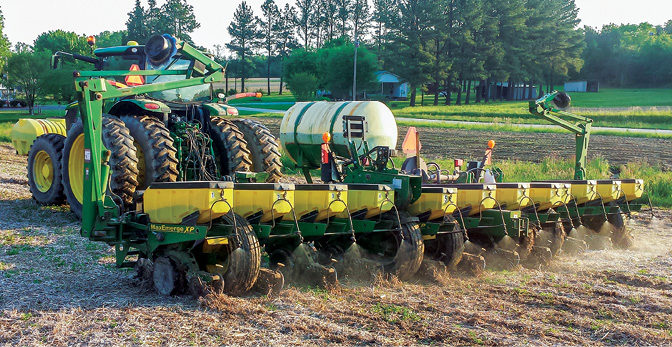No-Till Farmer
Get full access NOW to the most comprehensive, powerful and easy-to-use online resource for no-tillage practices. Just one good idea will pay for your subscription hundreds of times over.

Above photo: WEED AND SOW. North Carolina no-tiller Jimmy Thomas makes the second of three herbicide applications while planting corn. A tank mounted on the front of his tractor pumps Gramoxone to the spray nozzles fixed to the back of the planter.
By Jimmy Thomas
As interviewed by Martha Mintz
NAME: Jimmy Thomas
LOCATION: Timberlake, N.C.
YEARS NO-TILLING: 34
ACRES: 3,000
CROPS: Corn, Soybeans, Wheat, Tobacco and Hogs
Weeds were one of the first challenges we faced when my father made the switch to no-till.
Learning to manage weeds has been a critical part of our no-till success, and continues to be an important area for our management attention. And since weeds are so capable of change — especially with changing crops and systems — it’s a learning process that never stops, it seems.
Our first no-till crop was corn. It snowed a week after we planted, so we definitely got off to an interesting start. We pushed onward and spent 15 years no-tilling corn and soybeans, initially with an International 800 series corn planter, one of the first implements truly designed for no-till.

When we stopped chisel plowing, deep-rooted perennial weeds including multiflora rose, sand briars (Carolina horsenettle) and trumpet creeper really took off. We had to tackle those deep-rooted, tough plants with a variety of products and be diligent to get them out of our system. It was quite a task because we didn’t have glyphosate yet and we certainly didn’t have glyphosate-tolerant…